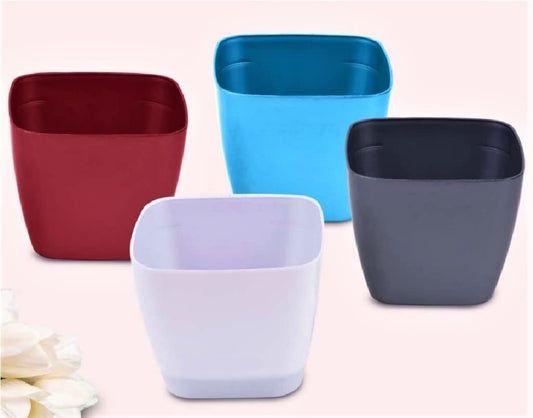Table Top Planters Beauty and Benefits of Bringing Nature Indoors
Table top planters have become a popular item in modern home decor, and for a good reason. These small, versatile planters are the perfect way to bring a touch of nature indoors without taking up too much space. In this article, we’ll explore the history of table top planters, the different types available, and some creative uses for these wonderful planters.
A Brief History of Table Top Planters
The history of table top planters can be traced back to ancient civilizations like Egypt and Greece, where potted plants were used both for decoration and medicinal purposes. The Romans also had a love for plants, and their gardens were often filled with herbs and flowers that were grown in pots and containers.
In medieval Europe, plants were grown in earthenware pots, which were typically large and heavy. As time went on, these pots became more decorative, often featuring intricate designs and patterns.
During the Victorian era, the use of table top planters became even more popular as people began to incorporate plants into their indoor spaces as a way to show off their wealth and status. Ornate planters made from porcelain, brass, and other expensive materials were often displayed on tables and other surfaces throughout the home.
Today, table top planters continue to be popular items in home decor, with a wide variety of styles, materials and sizes to choose from.
Types of Table Top Planters
There are many different types of table top planters available, each with its own unique features and benefits.
Ceramic planters
Ceramic planters are a popular choice for table top planters because they are durable, easy to clean, and come in a wide variety of colors and designs. They are also heavy, which helps to keep them stable on a tabletop or other surface.
Glass planters
Glass planters are a great choice for plants that need a lot of sunlight, as they allow light to pass through to the roots. They come in a variety of shapes and sizes and can be hung or placed on a tabletop.
Metal planters
Metal planters are durable and can be used both indoors and outdoors. They come in a variety of finishes, from polished to rusted, and can be used to create a modern or industrial look.
Terracotta planters
Terracotta planters are made from clay and are often unglazed, giving them a natural, earthy look. They are a great choice for plants that require well-draining soil, as the porous nature of the clay allows excess water to evaporate.
Hanging planters
Hanging planters are a great way to add greenery to a room without taking up any tabletop space. They can be made from a variety of materials, including macrame, metal, and ceramic.
Table top planters are versatile and can be used in many ways to add a touch of greenery to indoor or outdoor spaces. Here are some popular uses for table top planters:
Herb garden:
Table top planters are perfect for growing herbs in small spaces. They can be placed on a windowsill or kitchen counter, providing easy access to fresh herbs for cooking.
Succulent display:
Table top planters are ideal for displaying succulents, known for their low-maintenance and drought-resistant qualities. They can add a pop of color and texture to any space.
Flower arrangements
Table top planters use to create beautiful flower arrangements, which change out seasonally or for special occasions.
Centerpieces
Table top planters are used as centerpieces for dinner parties or other gatherings. They can be filled with flowers or greenery and placed on a table for a beautiful and natural touch.

Office decor
Table top planters can add a touch of greenery to an office space, making it feel more inviting and less sterile.
Outdoor living spaces
Table top planters can be used on balconies, patios, or other outdoor living spaces to add a touch of nature and create a cozy atmosphere.
Tabletop plant gardening is a great way to bring nature indoors and add a touch of greenery to your living space. Here are some tips for starting your table top planters gardening:
Choose the right plants:
When selecting plants for your tabletop planter garden, consider the light and humidity in your space.
Choose plants that thrive in low-light conditions if your area doesn't get much sunlight.
Consider the plant's size and growth habits to ensure it fits in the planter.
Choose the suitable planter
Choose a farmer that fits the style of your home and the needs of your plants. Ensure the planter has proper drainage holes to prevent overwatering and root rot.
Soil
Use high-quality potting soil to give your plants the necessary nutrients. Add in some organic matter like compost to help retain moisture and nutrients.
Watering
Water your plants regularly but avoid overwatering. Stick your finger in the soil to check if it's dry before watering. Make sure the water is evenly distributed throughout the soil.
Fertilizing
Fertilize your plants every few weeks with a balanced fertilizer to promote healthy growth.
Light
Place your planter in a spot that receives adequate light for your plants. If your plants require more light, consider adding a grow light to your space.
Maintenance
Regularly prune your plants to encourage healthy growth and remove dead or damaged leaves. Also, be sure to clean your planter regularly to prevent pests and diseases from spreading.
Table top planters gardening is a fun and easy way to add greenery to your living space. With the right plants, planter, soil, watering, fertilizing, light, and maintenance, you can create a beautiful and thriving garden indoors.
Overall, table top planters are an excellent option for anyone looking to bring a touch of greenery into their living spaces, no matter how small. They offer a wide range of uses and can be adapted to fit any aesthetic or plant preference.
Appreciate the creator